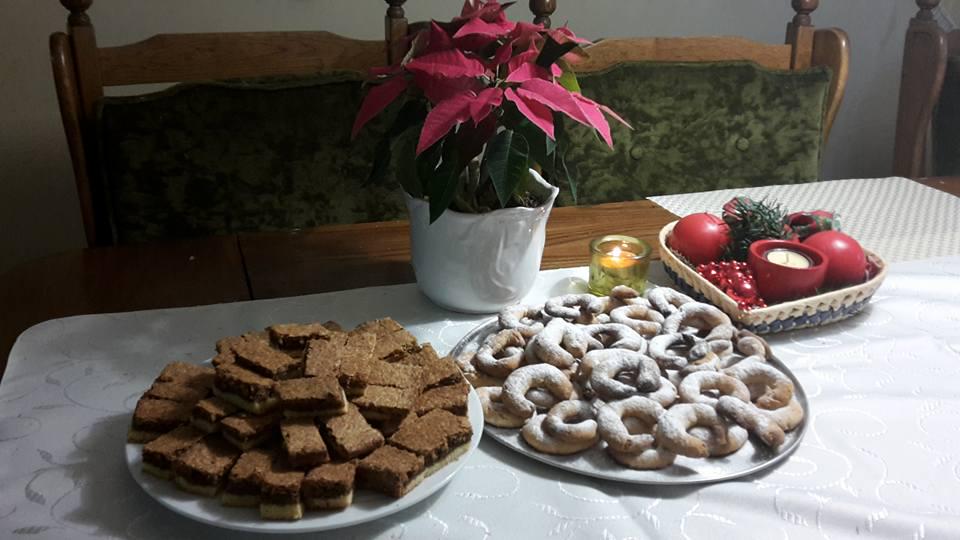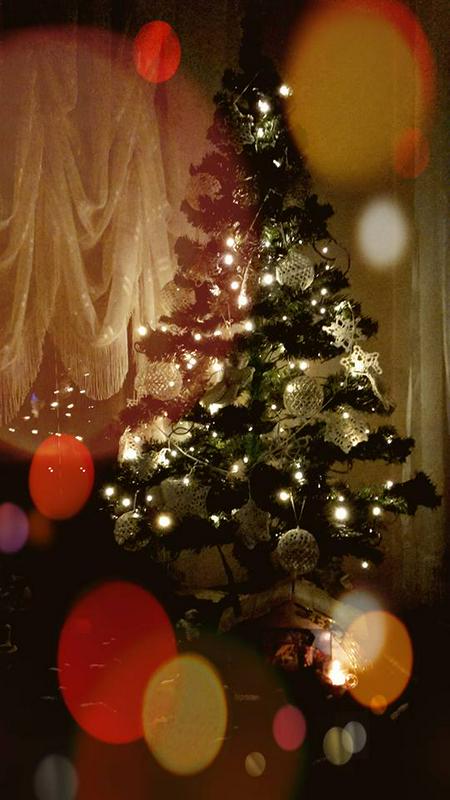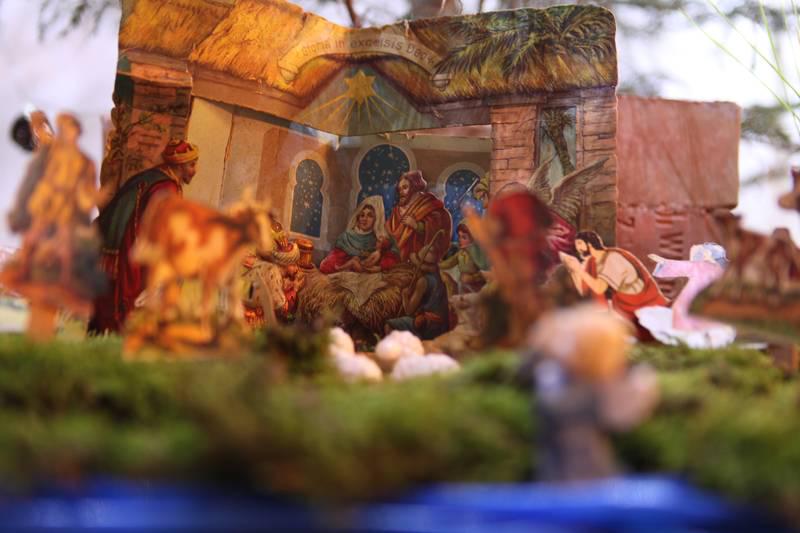
An old Slovene proverb says that every holiday has its own cut of meat (for instance of a pig). This meant that when farmers slaughtered animals, they had to save cuts of meat for the individual holidays. It is also interesting that holidays were in some way connected with work, so for instance during the harvest they had a special dish that was eaten all over Slovenia. There are also special customs and habits associated with shucking corn, harvesting and mowing. These customs made the days as enjoyable as possible, even celebratory, since in those days they were happy if the harvest was good, if they had brought in a good crop and they would have a lot of grain and flour that year.


The December holidays are my favourite. Primarily because you are with your family, and you can make the holiday truly magical for the children. At that time you take the time to create and display a different facet of an ordinary day, when that too can be a holiday. At home we prepare for these holidays mainly because we want to make the children think that it is something magical, beautiful, particularly in the sense of being together. Of course we put up a tree and a nativity, and Santa Claus brings presents. I am also very fond of Midsummer’s Eve and its magical quality, and St. Martin’s Day... I enjoy celebrating.

How would you describe the essence of celebrating holidays?
In the past, holidays represented milestones in people’s everyday lives. The various rituals, customs and habits were always associated with the life cycle of the individual – birth, marriage and death. Certain rituals, customs and habits were formed on the basis of natural phenomena, how the seasons change and how working outdoors changes. For instance in agriculture, when people had to take all of nature’s rules into account so that they could simply survive. Here we encounter various customs, habits and rituals associated with supplication for a good harvest or fertility, for example the traditional rounds of the kurents – this was usually done at the beginning of the year. October and November were marked by various thanksgiving rituals such as the celebration of St. Martin’s Day, which epitomised a ritual for a good harvest, when all the granaries were full and all of the debts to the field hands had been paid. Such rituals were used to give thanks and forecast a good harvest and a good winter.
The traditional, ancient holidays also had a broader spiritual scope. Were they also influenced by Christianity?
Many of these holidays of course do not have their origins in Christianity; they are much older. Christianity placed its feast days right on these so-called pagan holidays, so that the people would more easily accept the saints and patron saints as their own. There is nothing wrong with this, they‘ve simply put their feast days precisely on certain days, for instance Midsummer’s Eve – an interesting celebration of the summer solstice – which happens on the longest day of the year, after which the days start to get shorter. They lit bonfires in order to give the sun even more power; at this time plants, especially medicinal plants, have the most power, such as bracken ferns (i.e. ‘fiddleheads’). In the villages they put wreaths or bouquets of flowers in all the doors and windows, and there was a tradition of girls who would make rounds on Midsummer’s Eve and appeal for a good harvest through ritual singing. These customs and habits are still present in some areas, and in some places they are reappearing. Nowadays we rarely know about the origins of various holidays or customs. Some of this has been recorded, for instance in Niko Kuret’s book Praznično leto Slovencev (The Slovene Holiday Calendar), as well as the books of Janez Bogataj. But if you want to find out more about local customs, the best thing to do is go out into the field, among the “old folks”, but with a great deal of respect. They know the whys and wherefores. And that’s the way it should be. Often the habits, customs and celebrations can be completely local in character, and sometimes even limited to the family circle.
People used to prepare for the holidays very carefully, and the expectations kept on building up. How did people actually use to celebrate?
That’s true – people used to prepare a lot for the holidays. They prepared spiritually, by cleaning and decorating and cooking special foods. The most important holiday during the winter holidays is Christmas, which celebrates the birth of Christ. But even this knowledge about this part of Christianity is often lost nowadays... we have Santa Claus, who brings presents, and we present it to children as some sort of high point, but in truth we know that this is not the case. In the past people decorated the old houses by hanging apples and evergreen boughs below the ceiling, which represented a sort of rebirth. Young carollers went from house to house and sang, and received treats, there was St. Nicholas, and planting wheat in a pot during the feast days of St. Barbara and St. Lucy, and there were also various spells, sooth-saying and similar. I believe that people still have Christmas trees and nativity scenes. There are however fewer carollers, and St. John’s wine, which was intended for special occasions, is increasingly rare.
Holidays also have their own special smells.
Absolutely. An old Slovene proverb says that every holiday has its own cut of meat (for instance of a pig). This meant that when farmers slaughtered animals, they had to save cuts of meat for the individual holidays. It is also interesting that holidays were in some way connected with work, so for instance during the harvest they had a special dish that was eaten all over Slovenia. There are also special customs and habits associated with shucking corn, harvesting and mowing. These customs made the days as enjoyable as possible, even celebratory, since in those days they were happy if the harvest was good, if they had brought in a good crop and they would have a lot of grain and flour that year.
In the old days people socialised while working, and holidays were closely associated with work. What about today?
It seems that in the past work was associated with socialising with neighbours, relatives and friends, while today we have to “organise” such gatherings. Of course this is connected with lifestyle; while working they played various games, exchanged mockeries, sang and danced so that work would be as fun as possible, and these were also social gatherings. Nowadays such gatherings can only evoke nostalgia for the old times, since we have neither the land, nor the knowledge, nor the people to do this with. I myself believe that living in such an environment would be truly noble, but without any romantic attitude towards the heritage.
How do you experience the December holidays? Do you enjoy them?
I particularly enjoy the carollers, who in some way herald the holidays. My personal favourites are the feast days of St. Lucy and St. Barbara. On both of those days one can plant wheat in a pot and when that wheat sprouts, around the time of Christmas on 25 December, you have a symbol of rebirth.
What is your favourite holiday?
The December holidays are my favourite. Primarily because you are with your family, and you can make the holiday truly magical for the children. At that time you take the time to create and display a different facet of an ordinary day, when that too can be a holiday. At home we prepare for these holidays mainly because we want to make the children think that it is something magical, beautiful, particularly in the sense of being together. Of course we put up a tree and a nativity, and Santa Claus brings presents. I am also very fond of Midsummer’s Eve and its magical quality, and St. Martin’s Day... I enjoy celebrating.
Your greatest wish for the new year?
To keep going on the right path.
.
What success, achievement, or turn for the better would you most like to wish for Slovenia as a country? That they would know that there is enough of everything and that everything is just right.
An old Slovene proverb says that every holiday has its own cut of meat (for instance of a pig). This meant that when farmers slaughtered animals, they had to save cuts of meat for the individual holidays. It is also interesting that holidays were in some way connected with work, so for instance during the harvest they had a special dish that was eaten all over Slovenia. There are also special customs and habits associated with shucking corn, harvesting and mowing. These customs made the days as enjoyable as possible, even celebratory, since in those days they were happy if the harvest was good, if they had brought in a good crop and they would have a lot of grain and flour that year.
The December holidays are my favourite. Primarily because you are with your family, and you can make the holiday truly magical for the children. At that time you take the time to create and display a different facet of an ordinary day, when that too can be a holiday. At home we prepare for these holidays mainly because we want to make the children think that it is something magical, beautiful, particularly in the sense of being together. Of course we put up a tree and a nativity, and Santa Claus brings presents. I am also very fond of Midsummer’s Eve and its magical quality, and St. Martin’s Day... I enjoy celebrating.

































































